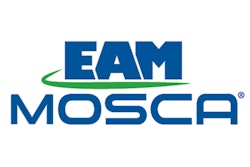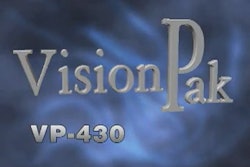Beginning with a prototype print/apply label system in May 2007, and completing the project with additional systems in September 2007, The Washington Post has implemented a high-efficiency method for delivering microzoned advertising from its Springfield, VA distribution location. The pressure-sensitive print/apply label units are supplied by ID Technology (www.idtechnology.com) and incorporate thermal printing systems from Sato (www.satoamerica.com).
The Washington Post’s engineering manager Conrad Rehill explains, what “microzoning” is.
“The delivery of preprinted advertisements such as local supermarket circulars and retail store sales fliers is responsible for a significant portion of the income of many daily and Sunday newspapers. By inserting these preprinted advertisements directly into the newspaper, we provide our advertisers with guaranteed-date delivery of these sales messages to the doorsteps of targeted consumer segments.
“Because the geographic area served by a newspaper can be segmented into specific advertising zones, advertisers have the opportunity to restrict their sales messages to specific desired portions of the newspaper’s delivery area. On any particular date, we may have hundreds of advertisers requesting delivery of their sales messages to different zones. So we need to be flexible. We need to be able to adapt our labeling operations quickly to the targeted audiences. In other words, we need to microzone.”
Getting of the ground
The Washington Post had previous positive experience with ID Technology label applicators. So when the newspaper started looking into additional labeling systems to accommodate the microzoning project, they realized that their electricians had already been trained on the ID Technology equipment and that spare parts inventory could be shared between the existing and new systems.
Rehill notes, “The Washington Post’s 2007/2008 microzoning project was a response to advertisers’ wish to choose from advertising zones smaller than those that had been offered in the past. The net result was a larger number of advertising delivery zones within the Washington, DC area (about 500 based on income, ethnicity, etc) and a correspondingly larger number of different recipes that must be handled by the production and circulation departments.
“To facilitate the management of this increased number of labeled products, the microzoning project team determined that each bundle of newspapers would need to be clearly identified and tracked from the palletizer in the production facility to the point in the distribution system where the bundles are handed to the delivery person. This tracking is done with an adhesive label applied to each strapped bundle. The label includes both human- and machine-readable information.”
Labeling procedures
The newspapers are bagged, bundled, strapped, labeled, and then strapped again. The Washington Post typically stacks its papers in bundles of 10 to 16. After the bundles are strapped, the ID Technology label applicator applies the 4 x 4-in labels. Each label includes a human-readable indication of the advertising zone, the delivery agent to whom the bundle will be given, the publication date, and the “recipe” (the combination of advertisements that are inserted into each paper in the bundle). Each label also carries a barcode that indicates the recipe, sales zone, and the collating machine on which the bundle was produced.
Rehill says, “Each of our four collators has two ID Technology Model 250 label applicators. We use the Sato Se85XX series thermal printers in direct thermal mode. We chose direct thermal over thermal transfer because we do not need long-term readability. Each bundle is produced, labeled, and consumed in the field within a few days. And we thought it would be easier to manage the device on our production floor if we did not have to replace a transfer ribbon.”
After each strapped bundle of papers has been labeled, the bundle is turned 90 deg for application of a second strap. The bundling and strapping equipment is manufactured by multiple suppliers, including Signode (www.signode.com), Dynaric (www.dynaric. com), and EAM-Mosca Corp. (www.eammosca.com) After the second strap is applied, the bundle passes beneath a bar-code scanner from Honeywell/Metrologic (www.metrologic.com). If a bundle does not yield a good scan, it is rejected and re-routed upstream of the label applicator for relabeling. After a bundle successfully passes this first scan point, it travels into a buffering conveyor approximately 100-ft long and is scanned again by a model MS-890 scanner from Microscan (www.microscan.com) before entering the palletizing area.
Functionalities & benefits
The ID Technology machines have several modes that allow The Washington Post staffers to choose where the beginning and end of a print/apply label sequence is. Rehill explains, “When the job is completed and bundles are no longer crossing the detection photoeye, we are not left with a label from the previous job waiting on the tamp pad. This is a very nice feature, which allows us to very accurately control the data applied to each bundle.”
Currently, The Washington Post has eight print/apply units deployed at its Springfield facility, with a ninth held in reserve as a drop-in spare. They produce bundles at about 20 to 30/min continuously on each ID Technology/Sato system.
Rehill notes, “While the equipment is relatively easy to program, there are several configuration parameters both for the print head and the applicator. From the beginning of the project, our ID Technology district manager John Napotnik has been an integral part of our team. When we had questions, ID Technology provided the answers.
“On the maintenance service side, ID Technology field engineers have never been more than a day away. And the service technicians who installed and configured each machine were the same ones who provided training to our electricians and machinists on routine maintenance as well as component removal and replacement. They are a very service-driven company.”





























